I’ve just come back from from a meeting with the contractor and he told me that MOST homes built in this area area are using the individual in-wall electric heaters and not whole house FAU units(propane or electric). This is in the Coastal Washington State area. Because we are not famailiar with the difference in long term costs, I’m not sure if this is the right choice. His comment was that the individual units run about $135 each and it’s alot cheaper to install these in each room than a complete system. It also give you more indivual room control. Can any of you guys give a quick lesson on the pros and cons. We only have wood, electric or propane available in this area. The wife really doesn’t want to deal with a wood stove either, except in emergencies. I have also considered hot water circulation system with individual inwall blowers for each room but nor sure if this is a good choice, either. By the way, were told that this coastal area doesn’t really need air conditioning, but the humity is in question (1 mile fromn the beach and 1/2 mile from the bay.)
Thanks in advance.
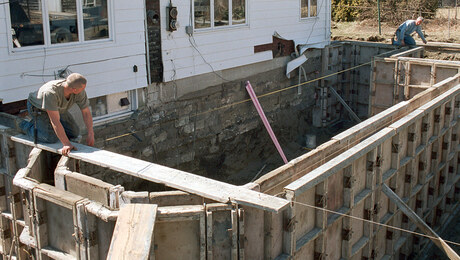

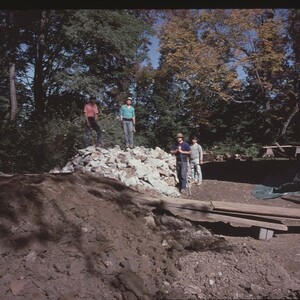
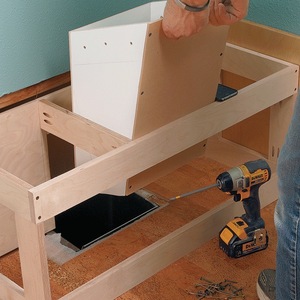
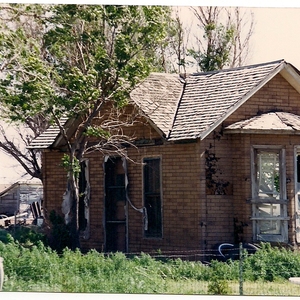
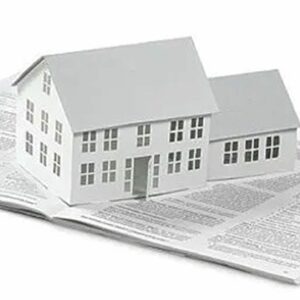












Replies
1. You will seldom need AC. (you get AC 'free' with HP option below)
That said, The comment "individual in-wall electric heaters " coupled with $135 indicates somebody is still pushing electirc resistance heatin- OK for low first cost, but you'll pay big in the long run.
If you are on the coast, you're either a county PUD or PSE or PGE if south? Anyway, whether you can DIY or not will influence your choices.
The phrase "meeting with the contractor " says you are not DIY.
So, your best long term bet would be maybe thru the wall heat pumps (like hotels, lots quiter now than used to be) about $600 to $1000 a room or 2 rather than $135 resistance heat, payback in less than 5 years. Best bet would be a whole house heat pump if DIY (packaged unit no EPA license required) or check your HVAC local prices for installed whole house split unit. My 4T Rheem unit was installed at under $2500 DIY including ductwork (bought from Grainger) and heats 5000 sq ft for less than $100 month in Seattle area in Jan/Fevb, coast should be even less cost for energy.
On the coast, HP would definetely beat natural gas even (33% NG rise in cost in most of WA this year)
IMNSHO, If your contractor gave you advice to go with resistance heating, I'd find a new contractor!, and quick! If they can install the HP thru the wall for $135, good deal!!!
The DIY route on the heat system is possible, since we are probably having him do the shell. The duct work is something that I really don't want to get into, but will if necessary. I really don't have the time to "learn on the job". Too many other things to do in a short period of time like the electrical, cabinetry and plumbing Were paying $850 a month on rent right now.
I didn't realize that natural gas is running higher than electric, which then I would assume that propane is even worse. Is this a normal thing up here? The PUD is Grays Harbor or something like that. I do agree that the initial up front cost of the individual resistance heaters is less, but that's why I'm asking.
Being from california(we ran away from that place as fast as we could) I prefer heat vents in the ceiling, not on the floor, but I also realize heat rises. Just that I don't like cleaning the floor installed units or the possibility of have the floor vent in the wrong spot. The home is on a raised foundation. Are ceiling ducts not recommended out here? The home will be somewhere in the 1600 sqft range. With all this input, you think electric heat pump is the best choice? What about size? Do they work well for dehumidification or should we consider a seperate unit for that. As you can tell heating/cooling systems are just one of those trades that I have not paid any attention to in the past.
Thanks for your time, Brian
When in the cooling mode heat pumps work exactly as airconditioners so they will remove the humidity.
With a house of that size I suspect that the cost of individual "motel room" style heat pumps will be excessive. Depends on the layout of the rooms. But it might work out if, for example you had a large open living room, dining room, kitchen where you could get by with one or two unti. Another for the master bedroom. And for little used rooms then you could go with the resistant units if you keep them off or way down most of the time.
You will have to run the numbers, but I think that a central system will be the best. Also the typical "motel room" style units are noisy.
Something else that you might look at is a ductless split unit. Those have a outside compressor like central air/heat pump, but a small on the wall or ceilling coil unit with a small airculating fan. Some of the outside units will now operate several indoor units.
I have no desire to use "motel room" units. Stayed in a motel 2 nights ago on my trip back from Calif. Woke up about every 20-30 minutes, the same time the unit turned on.
Went to a local construction show in Olympia and was talking to a local HVAC company and they suggested a heat pump with a exchanger. More of the typical home system but the compressor is outside of the house and he said the salt air will kill the unit in 5-7 years. He also suggested geothermal because we are so close to the water table(were on a lake), but they run about 30% more(of what I don't know that yet)
One of the biggest concerns is to be able to run individual zones without having to heat the whole house. Living, dining, kitchen and entry are on one zone and the 4 bedrooms on seperate zones/temperature settings. The other concern is a air cleaner/filter for the wife and daughter.
Why was in-floor radiant ruled out ?
A good heart embiggins even the smallest person.
Quittin' Time
This is outside my basic knowledge, but I believe that there are water to water ground source ("geothermal") heat pumps that you can use to supply radiant floor systems.
The geothermal sysytem isn't ruled out as long as it doesn't break the bank and neither has the radiant heat floor system either. I just ned more info. Too many choices and not enough time... or money
"When in the cooling mode heat pumps work exactly as airconditioners so they will remove the humidity."
I don't think that's right. When in AC mode, the coils inside the house are cool, so moisture condenses on them. When it's in heat mode, the inside coils are hot. So moisture won't condense. Q: What do you get when you mix holy water with prune juice?A: A religious movement.
couple notes on your post not sure where you are out there near or on Olympic Peninsula but don't fret too much over climate mild climate w/ a tendency to be quite wet ( different than humid ) orient openings to south & west
these other guys know much more than I re: heat pumps etc but working around them they tend ( before adding something like a humidifier ) to dry out a house; nice attribute for a PacNWest heating system
also rave reviews from people who know re: geothermal systems
you in God's country high divide out of Soleduck Hoh River Enchanted Valley east of Lake Quinalt that lodge is a classic 3rd beach La Push coastline hikes much in stor
hoping someone had something nice to say re: propane gas co a monopolistic pig here so looking to do gas top range and freestanding stove w/ propane but back to your thread good luck john
I appreciate your and others responses to my inquiries as to reccomended systems.
In your response your recommended a "SEER 14". Is that a brand name or a type of specification?. Also, the longevity of the condensing coil is a concern because of the salt air corrosion that exists in this area. We are a 1/2 mile from the salt water bay and about a mile or so from the ocean. Does the model you recommend hold up to this environment for that long of a period of time. If so, it makes a heat pump quite a bit more cost justifiable. I do like the idea of a multi-speed air handler since we do like running the unit for filtering purposes.
One of our options at this time is to put off the heating system until the later end of construction and see how fast the money is going. If there is any left over (yeah, right) we will be able to up grade the sytem. This not something I would look forward to, but I would be able to run the ducting and do all the necessary wiring myself. But, then again, for every month I spend working on this home, I spend another $850 in rent.
I do have a preliminary working floor plan of the home and I think it's time to start getting an estimate of cost. Final floor plan runs about 1720 sqft with 4 bedrooms. All exterior walls are 2X6 and most open areas with windows face either west or south.
I still have not ruled out radiant heat or geothermal, but cost will probably run more than I can justify at this time.
Since you are near Gray H, don't pay any attention to SEER, look at the HSFP number if you look at any of the 'dummy' numbers at all. Neither of these numbers (both made up out of test data from protocols authored by EPA lawyers me thinks) is anything other than a 'dummy' answer. My 10 SEER unit actuall performs BETTER in the heat pump mode than a 14 SEER unit, by the same manufacturer!
If you have a technical inclination, get the 'raw data' type info from the manufacturer. That will list temperature differential between outside air and desired inside temp, heating loads, and electrical draw. If the mfg won't give out that data, forget them. I spent probably 30 hours doing spreadsheets on data Grainger sent me a few years back on the "Dayton" brand thaey carry which were at that tiem Rheem. They sent out about 20 pages of tech data that allowed me to do a good trade for my own house (installed HP 2 Years ago when wife said after 30 years of splitting 14 cords wood/year was too much for her now)
Ask your electric company if they have an "off peak" price system. Here (Southern Colorado) we get get off peak power at less than half the typical KWH rate IF we have electric thermal storage heaters. We are just starting to build and are going to go with the ETS units that are made by Steffes.
Very few people seem to be aware of ETS heaters, so here's a brief:
They are a metal box reminiscent of a radiator in shape and size. They are filled with ceramic bricks that absorb heat created by electric resistance. They are "charged" at night (off peak hours) when the grid is pumped full of power that few are using. Here the off peak hours are 9pm to 5 am year-round plus 2pm to 4pm from October through April. The units radiate heat all the time so that, like a wood stove, there is a place to stand and get warm (I like it that way and so do many others). During typical daytime heating hours the units work on a thermostat that simply turns on a small fan and blows heat out that has been stored in the bricks during the night. The surface of the unit is hot, but not hot enough to burn you. They units have the extra benefit of burning many allergens as they pass through the unit because the bricks are (when fully charged) up to 1800 degrees.
I know several people who have these units in either homes or offices and everybody I've asked loves them.
Of course they cost more than typical electric resistance heating units to purchase, but the pay back time is very reasonable.
We used to live on Vashon Island and spent many enjoyable times out on the coast!
Good luck with your project...
Any jackass can kick down a barn, but it takes a carpenter to build one.
Paul: I've never been able to locate anything other than generalities about the test conditions used for SEER and HSFP. Do you know of a source for the 'official' specification on the web or details?
It seems like two of your desires remain long term savings and forced air filtering. Another heating option that may meet your goals is Fuel Oil. Oil is common in older urban & rural neighborhoods and should also be explored in your region. The reason it is not used as often in new construction is higher equipment costs. A good oil water heater is about twice the cost and a good oil furnace is about 2 to 3 times the cost of gas/propane. However, an oil furnace & WH will last about 4 times longer. Cost of oil is always a factor but so is electricity, gas/propane, & taxes. With oil, there is no additional taxes except sales tax. Just filled my 300 gal tank with top grade oil for $1.25 gal. 300 gallons will last me the whole winter (Seattle). Use an above ground tank due to your high groundwater level.
Historically, Washington State and Oregon had really cheap elecrical rates. Had a co-worker who was paying 0.5/kwh as recently as 9 years ago in a some electric co-op. That's one half cent! Versus 6 to 12 cents in most places and as high as 20 cents in some. So historically, electric resistence heat made sense because of those big hydroelectric dams on the Columbia and the cheap install cost. But with a buttload of Californians moving to WA and OR, and shipping more electrons south to California, electric rates are closer to the rest of the country now. So just because most houses had electric resistence heat put in 10 or 15 years ago, doesn't mean it is the right decision now.
Your contractor may be suggesting it because "that's what my daddy did" and/or because he doesn't have the skill or knowledge to size and install a more sophsicated system.
Make a few phone calls. Check electric rates and get quotes on filling YOUR OWN 500-gallon propane tank (let's you shop around around instead of having to use the company that loans you the tank). Repost with the rates and people can respond both on the comparison $/Btu and whether the added cost of heat-pump (be it air/air or water/water or whatever) is worth the added capital cost.
The projections that I saw recently indicated that nationally, electricity and particularly natural gas prices were likely to increase for the near term future. Fuel oil was slated to increase much less. The Northwest had historically low electric rates up until at least the time of the WPPSS nuclear debacle, but the wonders of deregulation and the desire to save the salmon have caused the price to increase - although it is generally still below the national average. The Eastern politicians have tried to erase any favorable electrical rates for Northwesterners (if we can't have it, they shouldn't get it...), so electric rates are likely to rise and may approach the rates in most other parts of the country. Natural gas prices aren't likely to decrease until a new major field is tapped as it is increasingly being desired as a "clean fuel" and more electrical generating plants are making use of it instead of coal or oil. One problem with fuel oil can be the smell that manages to get into the heated air on hot air systems. My mom ripped out the oil furnace in her house and went with electric resistance heat because she couldn't get rid of the fuel oil smell in the furnace.
I tried to talk her into getting a heat pump when her air conditioner failed recently, but she talked to a number of people around her small town and no one was particularly fond of them. She said that someone at the local electrical utility even said that they no encouraged the use of heat pumps, but I couldn't find out why.
Recent article on natural gas prices:
http://www.cbsnews.com/stories/2003/10/01/tech/main576068.shtml
Edited 10/1/2003 8:32:28 PM ET by CaseyR
Maybe you'd know. Since all the small (25-50 megawatt) turbines that have been installed in the last 15 years are derived from aircraft engines, could they be configured to burn Jet-A or diesel? Liek they do when on the wing of a 747. I know they mostly (all?) burn NG because of cleaner exhaust and previously lower prices. But if they could be switched over, could the impending NG shortages be forestalled?
David Thomas Overlooking Cook Inlet in Kenai, Alaska
"derived" is the key word. NG are slightly more efficient as the Brayton topping cycle. Most turbine setups also use Rankine as bottom cycle, and some use the condensing heat derived from the rankine for process or other low grade heat uses.
A quote from the following is below, which also describes maintenance and bottom cycle interactions in a good summary: http://www.jxj.com/magsandj/cospp/2003_04/chp_industry_performance.html
"The heavy industrials use a longer combustion chamber, which makes it more suitable for burning poor-quality fuel. However, the longer combustor also sacrifices combustor efficiency due to reverse-flow pressure losses, a greater surface area to be cooled, and greater heat loss through convection and radiation."